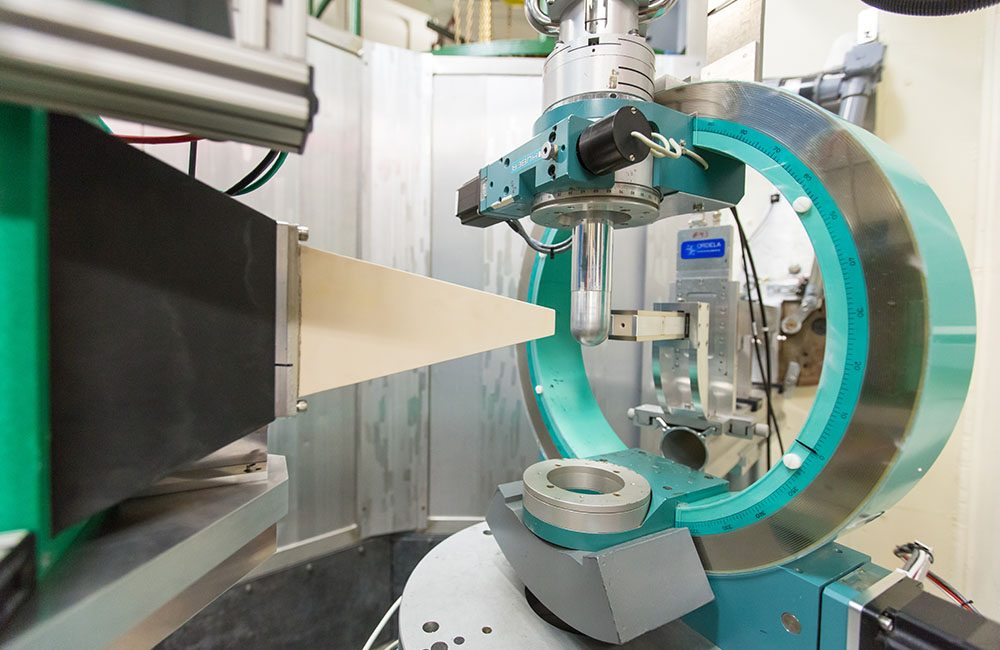| Sep 17, 2022 |
|
(Nanowerk News) Topological insulators act as electrical insulators on the inside but conduct electricity along their surfaces. Researchers study some of these insulators’ exotic behavior using an external magnetic field to force the ion spins within a topological insulator to be parallel to each other. This process is known as breaking time-reversal symmetry.
|
|
Now, a research team has created an intrinsic ferromagnetic topological insulator (Science Advances, “Realization of an intrinsic ferromagnetic topological state in MnBi8Te13“). This means the time-reversal symmetry is broken without applying a magnetic field.
|
|
The team employed a combination of synthesis, characterization tools, and theory to confirm the structure and properties of new magnetic topological materials. In the process, they discovered an exotic axion insulator in MnBi8Te13.
|
 |
| Researchers performed single-crystal neutron diffraction using the HB-3A four circle diffractometer to confirm the first intrinsic ferromagnetic topological insulator. (Image: Genevieve Martin,ORNL)
|
|
Researchers can use magnetic topological materials to realize exotic forms of matter that are not seen in other types of material. Scientists believe that the phenomena these materials exhibit could help advance quantum technology and increase the energy efficiency of future electronic devices.
|
|
Researchers believe that a topological insulator that is inherently ferromagnetic, rather than gaining its properties by adding small numbers of magnetic atoms, is ideal for studying novel topological behaviors. This is because no external magnetic field is needed to study the material’s properties. It also means the material’s magnetism is more uniformly distributed.
|
|
However, scientists have previously faced challenges in creating this kind of material. This new material consists of layers of manganese, bismuth, and tellurium atoms. It could provide opportunities for exploring novel phases of matter and developing new technologies. It also helps researchers study basic scientific questions about quantum materials.
|
|
The research team, led by scientists from the University of California, Los Angeles, developed the intrinsic ferromagnetic topological insulator by making a compound with alternating layers of MnBi2Te4 and Bi2Te3, bonded by weak interlayer forces of attraction between molecules. Scientists recently discovered that MnBi2Te4 is a naturally magnetic topological material. However, when layers of magnetic MnBi2Te4 are directly stacked on one another, the magnetic moments within neighboring layers point in opposite directions, making the material antiferromagnetic as a whole – losing the topological aspects of the properties that are important for technologies.
|
|
The researchers solved this problem by making a new compound with three nonmagnetic layers of Bi2Te3 between layers of MnBi2Te4, which, combined, creates MnBi8Te13. This material design increases the distance between the MnBi2Te4 layers, which successfully eliminates the antiferromagnetic effect, leading to long-range ferromagnetism below 10.5 K with strong coupling between magnetism and charge carriers.
|
|
Important aspects of this research were neutron scattering experiments through the DEMAND instrument at the High Flux Isotope Reactor (HFIR) that pinpointed how atoms are arranged within the MnBi8Te13 material and confirmed its ferromagnetic state. Because neutrons have their own magnetic moment, they can be used to determine the magnetic structure inside a material.
|
|
The scientists additionally used angle resolved photoemission spectroscopy experiments at the Stanford Synchrotron Radiation Lightsource, a Department of Energy user facility, and first-principles, density functional theory calculations to investigate the material’s electronic and topological state. Combining the assessments from all of these methods, the researchers were able to validate the ferromagnetic and topological properties consistent with an axion insulator with sizable surface hybridization gaps and a nontrivial Chern number.
|


